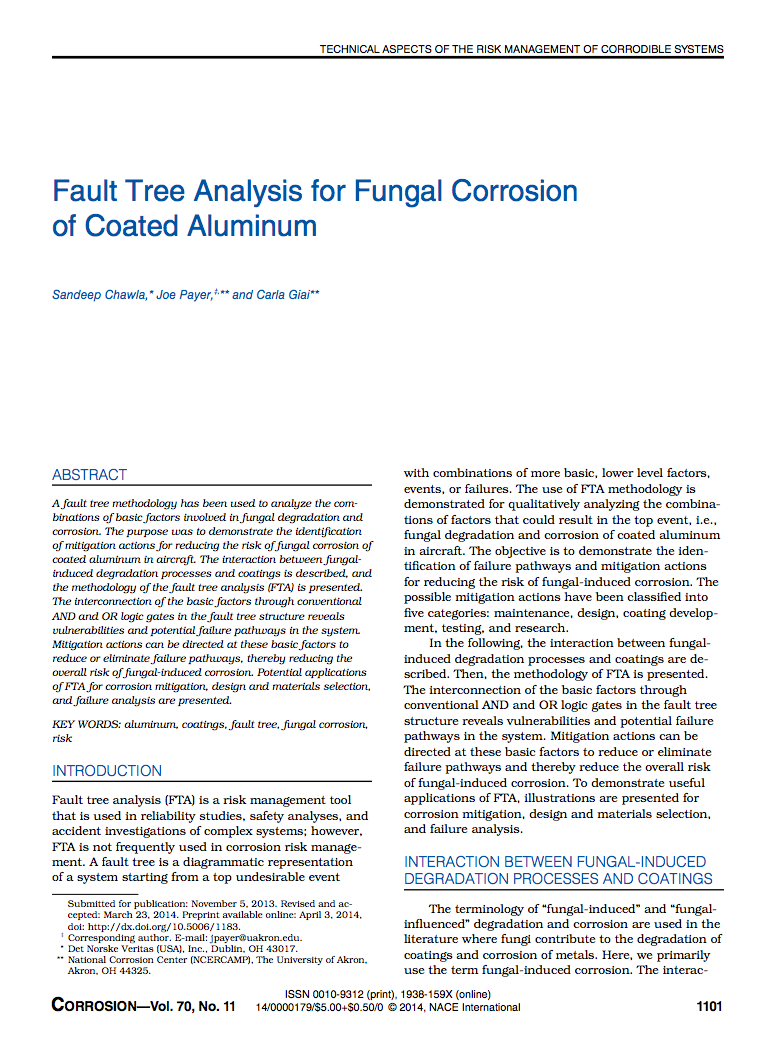My wife, Dr. Carla Giai, together with our colleagues Prof. Joe Payer and Dr. Sandeep Chawla recently published a paper investigating the use of a fault tree methodology as a risk management strategy to mitigate microbially influenced corrosion (MIC) of aluminum alloys for aerospace applications. Fault tree analyses are powerful tools not only in corrosion engineering but also in optimizing materials selection and in improving equipment design.
The manuscript can be downloaded from NACE’s web site or directly following this link.
Citation Information
Sandeep Chawla, Joe Payer, and Carla Giai (2014) Fault Tree Analysis for Fungal Corrosion of Coated Aluminum. Corrosion: November 2014, Vol. 70, No. 11, pp. 1101–1113. doi: 10.5006/1183. ISSN 0010–9312 (print), 1938–159X (online)
For more information, please contact me.
Abstract
A fault tree methodology has been used to analyze the combinations of basic factors involved in fungal degradation and corrosion. The purpose was to demonstrate the identification of mitigation actions for reducing the risk of fungal corrosion of coated aluminum in aircraft. The interaction between fungal-induced degradation processes and coatings is described, and the methodology of the fault tree analysis (FTA) is presented. The interconnection of the basic factors through conventional AND and OR logic gates in the fault tree structure reveals vulnerabilities and potential failure pathways in the system. Mitigation actions can be directed at these basic factors to reduce or eliminate failure pathways, thereby reducing the overall risk of fungal-induced corrosion. Potential applications of FTA for corrosion mitigation, design, and materials selection, and failure analysis are presented.

[altmetric doi=”10.5006/1183″ type=”donut” condensed=”true” data-hide-no-mentions=”false” popover=”right” details=”right”]
Update February 5, 2017
Added the Altmetric badge and the full citation information.